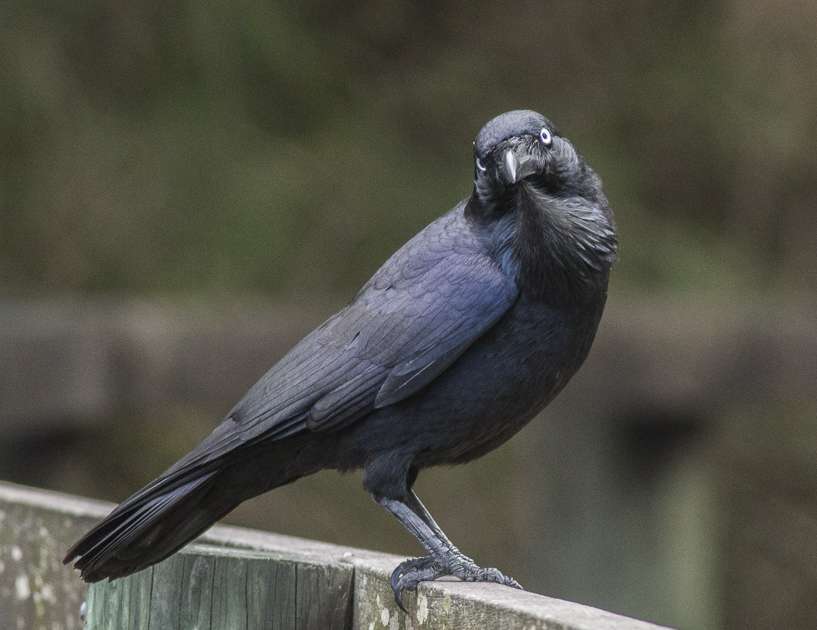In a world first, announced by the Australian Museum today, a team of international scientists including three Australians, Al-Aabid Chowdhury and Professor Simon Ho from University of Sydney, and Dr Jacqueline Nguyen from Australian Museum and Flinders University, have determined the family tree of modern birds and pinpointed the timing of their evolution. Their findings have been published today in Nature.
The largest study ever undertaken of modern bird genomes, the scientists combined genomic data of more than 360 bird species with data from nearly 200 bird fossils to reconstruct the most well-supported Tree of Life for modern birds.
The research revealed that most modern bird groups appeared within a very small evolutionary window of only 5 million years. These findings support the hypothesis that birds made the most of opportunities after an asteroid struck earth 66 million years ago wiping out the dinosaurs.
The comprehensive study was led by Assistant Professor Josefin Stiller from the University of Copenhagen, along with Associate Professor Siavash Mirarab from the University of California, San Diego and Professor Guojie Zhang from Zhejiang University.
“Our study has resolved some previous disputes about the bird family tree and added new nuance to the textbook knowledge of bird evolution,” Assistant Professor Stiller said.
Earlier studies had already established that the 10,000 species of living birds form three major groups. About 500 species belong to the flightless ratites group or the landfowl-waterfowl group, however all other birds form a third large and diverse group called Neoaves.
The latest study has been able to establish deeper understanding of relationships in the Neoaves group, which itself contains 10 major sub-groups of birds. These include the colourfully named ‘Magnificent Seven’, including cuckoos, doves, and flamingos, along with three ‘orphan’ groups of birds whose ancestry has long been uncertain.
Professor Ho, who specialises in evolutionary biology at the University of Sydney, said the research has worked out the evolutionary relationships of the major bird groups.
“With such a huge amount of genome data, our study has been able to provide the clearest picture of the bird family tree so far, particularly among the ‘Magnificent Seven’ and three ‘orphan’ bird groups, which make up 95% of bird species,” Professor Ho said.
Australian Museum and Flinders University avian palaeontologist, Dr Jacqueline Nguyen, said the fossil information was used to work out the timescale of the bird family tree.
“By combining evidence from nearly 200 bird fossils, we were able to pinpoint an extremely important period of bird diversification that happened immediately after the extinction of the dinosaurs,” Dr Nguyen explained.

The genomes also reveal a new grouping of birds that the researchers have named ‘Elementaves’, inspired by the four ancient elements of earth, air, water and fire. The group includes birds that are successful on land, in the sky, and in water. Some birds have names relating to the sun, representing fire. Penguins, pelicans, swifts, hummingbirds and shorebirds are among the birds that have been placed in Elementaves.
Two of the most well-known groups of birds in Australia, the passerines (songbirds and relatives) and parrots, share a very close relationship. Songbirds include familiar birds such as magpies, ravens, finches, honeyeaters and fairy-wrens. They originated in Australia about 50 million years ago and have become the most successful group of birds, making up nearly half of all bird species worldwide.

Credit Jennifer Sumpton
Despite the enormous scale of the latest genome study, there is one mystery that continues. The researchers were unable to work out the relationships of the hoatzin, a distinctive bird that is only found in South America and is the sole survivor of its entire lineage.
The findings are the outcome of nearly a decade of research involving scientists from across the globe working together on the Bird 10,000 Genomes Project (B10K), which aims to sequence the complete genomes of every living bird species.
Chief scientist and Director of the Australian Museum Research Institute, Professor Kris Helgen, said that genomic tools have precipitated one of the great revolutions in biological sciences.
“The global scientific community has come together to champion impressive genome projects like Bird 10K. Efforts like these can address long-standing questions about evolution, in this case for all living species of birds. They do this by drawing on new genetics techniques, expertise on anatomy and the fossil record, and carefully curated DNA samples, which are stored behind-the-scenes in the collections of natural history museums in Australia and around the world,” Professor Helgen said.
(For our story on Native Birds to be found around Freo, look here.)
~~~~~~~~~~~~~~~~~~~~~~~~~~~~~~~~~~~~~~~~
* If you’d like to COMMENT on this or any of our stories, don’t hesitate to email our Editor.
** WHILE YOU’RE HERE –
PLEASE HELP US TO GROW FREMANTLE SHIPPING NEWS
FSN is a reader-supported, volunteer-assisted online magazine all about Fremantle. Thanks for helping to keep FSN keeping on!
*** Don’t forget to SUBSCRIBE to receive your free copy of The Weekly Edition of the Shipping News each Friday!










